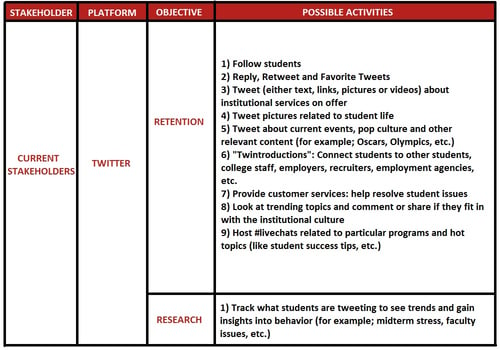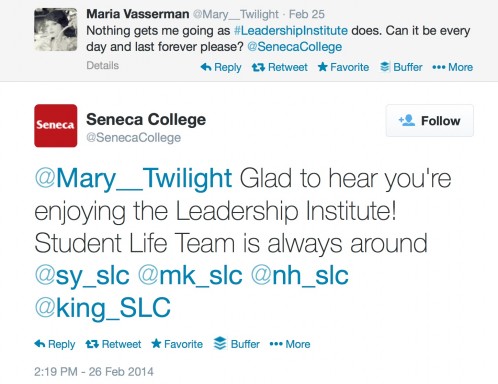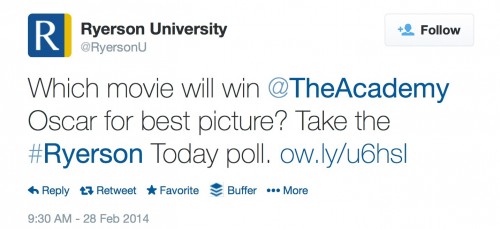Published on
Getting Social: How Higher Ed Institutions Can Make Better Use of Social Media Tools

To improve their use of social media, though, higher education institutions should truly get social — and that means putting more “social” into social media. They should use social media to engage with people. Make connections, help people, ask questions, respond to questions and demonstrate that the institution is made up of warm, kind and caring individuals.
Recent examples of institutions that get social include the college I teach at and a university in downtown Toronto. Seneca College, one of Canada’s largest colleges, employs “social listening” to engage with students and the community. As shown in the included tweet from Seneca, they respond to the student’s comments about a recent leadership training session and include information about campus-specific student life accounts to extend the good feeling that the student had.
Ryerson University takes advantage of the fact that the community is also interested in pop culture, hence the engaging tweet about the Oscars (see the below tweet from Ryerson). They ask a question and provide a call to action. This has nothing to do with the university, other than directing people to the website, but it does show that Ryerson is involved with its community.
How Do You Get Social?
First, recognize that students expect authentic and personal communication when they want and where they want. Then, recognize that everyone else expects this as well. Your communication must be two-way; it’s not just about pushing your message out.
Next, understand the user profile for each of the common social media platforms and what type of communication is appropriate. For example, Twitter is limited to 140 characters and it’s hard to have a discussion via YouTube. Then, create a list of stakeholders; determine which platforms they use, what your objectives are for each stakeholder and the type of activities you could undertake on each platform and for each objective.
Collecting analytics and reviewing social media performance is critical to the success of using social media. Set up a process for monitoring and managing social media using tools such as Salesforce Marketing Cloud (Radian6), Marketwired’s Heartbeat or HootSuite.
Finally, institutions must be transparent with their social media use. Trumpet the successes but also acknowledge the warts.
Five Steps to Succeeding with Social Media
- Listen: What is being said about your institution on social media? Who is saying it? Where are they saying it? When are they saying it?
- Reach Out: Address issues and respond to what is being said.
- Ask for Feedback: Find out what’s working and not working. Include faculty, alumni, parents and other stakeholders.
- Be Part of the Community: Share things of interest to your institution’s social community. Alumni profiles. Live streaming of a classroom discussion. Charitable activities. Student successes in academic and athletic competitions. Local traffic, weather and public transportation updates. Find out what your audience is chatting about and join in the conversation.
- Make Connections: Connect students to alumni, alumni to employers, employers to program coordinators, small businesses and not-for-profits to faculty, students to recruiters and agencies and so on.
The table below illustrates what to consider if targeting current students with the objectives of retention and learning from their activities.

As Dave Fleet of Edelman Digital shared recently in his blog, “I couldn’t care less if you’re in PR, social, digital or anywhere else in the company. You know what I care about as a customer? I care about whether you can meet whatever need I have at that moment in time. In particular, if I need help, I want you to help me. I don’t give a damn about the fact that you’re in marketing — you’ve set up a presence in a two-way channel, and if you don’t use it as a two-way channel then I’m going to judge you accordingly.”
Just replace “customer” with “stakeholder” or “student,” and “marketing” with “higher ed.” Now go get social.
Author Perspective: Educator





